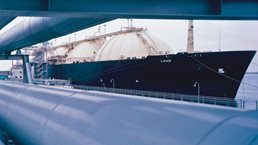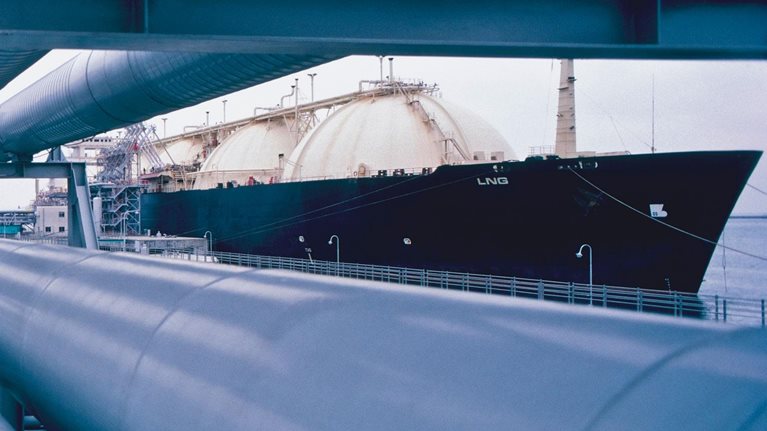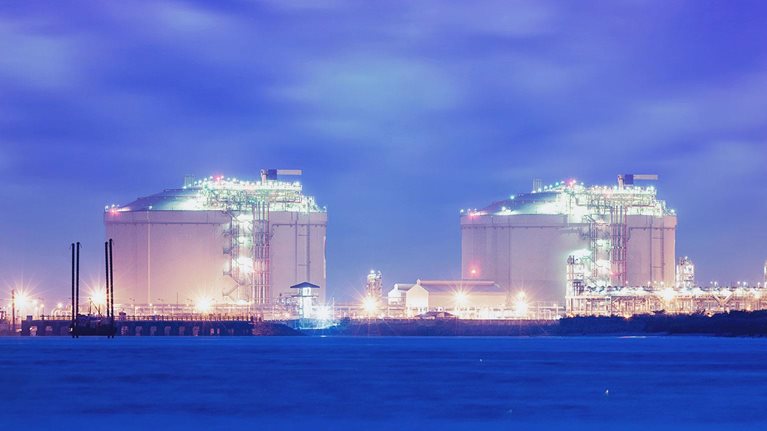Since 2011, the size of the liquefied natural gas (LNG) market has more than doubled—and during the past three years, the growth of LNG volumes has exceeded 10 percent annually. The number of importing and exporting countries has grown from 25 to 65, and the number of counterparties active in the LNG market has more than doubled. As a result, there is now a multitude of LNG supply-and-demand points throughout the world (Exhibit 1).

In addition, the types of commercial models and contracting arrangements have also become more diverse and sophisticated to match evolving needs. Historically, the LNG market has relied on point-to-point contracts between suppliers and buyers, linking LNG volumes from the liquefaction terminals to regasification terminals in the destination markets. In the early 2000s, leading LNG players started building LNG portfolios, breaking away from traditional point-to-point contracts. In an LNG portfolio, LNG volumes are purchased from the liquefaction plants in the player’s portfolio, optimized at the portfolio level, and then sold to buyers.
A vast majority of LNG contracts were linked to oil prices because the industry has historically competed with other oil products. The emergence of liquid gas markets in the United States and Europe, in conjunction with the liberalization of power and gas markets around the world, increased volume and price uncertainty, leading to the need for more complex contract structures. Today, contracts commonly include sophisticated pricing terms (gas hub–linked pricing and index switching formulas with hybrids of minimums and caps), volume flexibility options (cargo-size tolerance, seasonal swings, and carry-forward options), and tailored credit and payments terms (secured payments on power offtakes and more limited guarantees).
However, offering these flexibilities and contract optionalities requires a sizeable and diverse portfolio as well as a new set of capabilities, such as price optimization, risk management, and advanced contract structuring. These may prove challenging for smaller players and new market entrants that lack the scale to participate. As the LNG market evolves to accommodate both traditional and nontraditional players, organizations must adapt by growing their portfolios and developing their trading and origination capabilities.
Expanding LNG commercialization across the value chain
Leading players that hope to capture value from optimized portfolios are in an arms race to meet increased demands for flexibility and margin creation.
The shale gas revolution in the United States enabled tollers1 to emerge as new LNG suppliers offering destination-flexible LNG supply with transparent pricing. Furthermore, recent conventional gas developments in the Russian Arctic and East Africa added new suppliers in addition to existing ones in Australia, Qatar, and West and North Africa. For buyers, LNG has become a more accessible commodity because of the proliferation of suppliers. Other reasons include market regulations that allow third-party access to existing gas and LNG infrastructure, capital-efficient import infrastructure options, such as floating storage regasification units, and the increase in LNG market liquidity—today, 37 percent of LNG cargoes are sold on spot or short-term contracts of four years or less. During the past five years, a wider range of new and relatively smaller buyers have also entered the market—for example, in Greece and in China—where they account for more than 20 percent of LNG imports.
Would you like to learn more about our Oil & Gas Practice?
As a result of these developments, national oil companies (NOCs) and LNG marketers have set up LNG commercial optimization and trading teams to maximize the net-back value of their supply. In addition, portfolio players have been able to bring LNG projects to final investment decision (FID) faster than their competitors by using their portfolios to manage noncontracted supplies, which need to be sold spot or contracted at a later stage. Commercial capabilities became increasingly important for LNG projects approaching FID in an environment where buyers’ preferences shifted toward shorter-term contracts.2 These shorter-term contracts are not sufficient to recover the full up-front capital cost of the LNG plant investment, which typically requires 20 to 25 years.
Leading trading houses have stepped into the LNG space to capture trading margins in a fast-growing market. In addition, large LNG buyers have set up LNG trading and optimization subsidiaries to capture the full value of flexibilities or optionalities and better manage LNG-sourcing risk, especially in the context of increasing uncertainty related to the energy transition and subsequent changes in the market.
We have categorized active LNG players into five archetypal groups (Exhibit 2).

Many of these groups are expanding to include LNG commercialization through portfolio optimization and trading. To meet their ambitions for LNG commercialization, these groups focus on developing best-in-class capabilities in LNG origination, trading, optimization, strategy, and marketing.
What does a leading LNG commercial team look like?
Developing LNG commercialization capabilities requires building the front- to back-office organization, which is instrumental to capture value from LNG production and LNG usage in wholesale gas markets (Exhibit 3).

The front-office team is crucial, as it is tasked with identifying opportunities through origination, and capturing the full value of the portfolio—from sourcing natural gas or LNG on wholesale markets to delivering LNG to end users. Within this team, responsibilities are split between the short-term (or spot trading) of cargoes, the long-term sourcing and marketing of LNG cargoes, and optimization activities. The optimization team’s remit includes assessing if the portfolio’s value can be increased via price reviews or renegotiations.
In addition to expanding along the value chain, global players have sought to increase the size of their sales and purchases portfolios, which enables them to capture more optionality and best serve their customers. So far, M&A and industry consolidation have proven to be an effective way to accomplish this.
Unprecedented need for LNG commercial talent
The high-paced overall market growth and the race among leaders to optimize their portfolios has led to unprecedented double-digit growth in the number of LNG commercial roles (Exhibit 4). These roles are fulfilled within all types of LNG players, including physical traders, NOC marketers, merchant utilities, portfolio players, and other marketers.

A detailed analysis of global companies with LNG commercialization activities identified an impressive annual growth rate of 13 percent for dedicated global LNG commercial roles, increasing by approximately 27 percent from 2017 to 2018. That growth rate is equivalent to more than three times the annual growth rate for global gas consumption in the same time frame. Such figures provide empirical evidence of the intense competition among LNG players.
Significantly, physical traders and portfolio players are the fastest-growing categories of full-time equivalents (18 and 14 percent, respectively) during the past five years, compared with NOC marketers and other marketers (13 and 12 percent). This difference highlights the increased investment by LNG players to go beyond marketing and origination and into core intermediation and portfolio optimization. Indeed, doing so can allow companies to better allocate supply and sales as well as create value from arbitrage.
Retention and incentives are critical for assembling a high-performing talent base. As companies develop capabilities that are currently scarce on the market, being able to attract and retain top talent will be a competitive advantage.
Among archetypal LNG players, independent traders have grown their LNG teams most quickly (Exhibit 5). A particular focus on expanding trading and optimizing teams has enabled independent traders to develop the capabilities required to arbitrate global LNG flows—with analysts dedicated to screening market movements to identify trade opportunities or to running multiple scenarios for optimums that they can recommend to traders.

Still, attracting and retaining top talent is a challenge in the LNG industry—critically for commercial roles. Opportunities to rotate talent across marketing, origination, trading, and optimization should be explored to further stimulate career journeys. In addition, targeted acquisitions of world-class talent can accelerate capability building and best practices across the organization.
Especially among the best talent, limiting talent churn requires clear career paths, close performance management, and competitive incentives. And retention can be especially challenging in trading hubs such as London, Geneva, Houston, and Singapore.
How to develop best-in-class trading and origination capabilities
There is clear urgency for LNG players to significantly invest in their trading and origination capabilities by increasing the sophistication of their trading functions and upskilling their talent. Companies should focus on growing their portfolios as well as growing their trading and origination teams. Having the right people in the right place also requires incentives to nurture talent, which should include a combination of individual performance review and overall portfolio value creation.
Lay out a best-in-class operating model for LNG commercialization activities. Such a model requires a so-called book structure that provides clear visibility on profit and loss contributions from origination, marketing, and trading activities. At each interface, from the offtake of gas upstream to the sale of LNG downstream, transfer prices should reflect the specific volumetric and pricing optionality. Moreover, the organizational structure for front-, middle-, and back-office activities should facilitate overall LNG portfolio optimization.
Develop an optimization capability for LNG trading. Optimizing trading capabilities requires advanced analytics solutions for daily scheduling, both in the long and short term. More specifically, these solutions must capture arbitrage on cargo swaps, 90-day schedule revisions, bunker or fuel oil consumption optimization, call or put options exercisability, and hedging optimization. Access to these capabilities is particularly important for new market entrants or smaller players that have fewer clients.

Global gas and LNG outlook to 2035
Adopt a risk management approach for LNG and natural gas. Comprehensive market-price and volumetric risk management should include both natural gas and LNG exposure monitoring, stress tests, and risk analytics. Advanced models can further help estimate risks associated with embedded contract optionalities in LNG commercial arrangements. Once the risk limits are understood, an optimal use of hedging instruments—such as over-the-counter and exchange-based swaps—can manage LNG trading positions.
Ensure trade-to-cash processes are optimized to minimize costs. The process for all contract-life-cycle activities—from trade capture to scheduling, settlements, and financial reporting—should be optimized. This process can be supported by a detailed definition of the responsibility assignment matrix (such as “RACI”) as well as interfaces between front-, middle-, and back-office teams.
Roll out an LNG trading IT landscape. A core system of energy or commodity trading and risk management can act as the backbone of the trade-to-cash infrastructure. Furthermore, a set of optimization models and solutions dedicated to logistics, shipping, or scheduling can be used as “bolt-on” parts to the core trading and risk-management software solutions.
LNG players that stand to win the arms race—and subsequently capture the most value—will be the ones committed to significant investments in building and maintaining best-in-class LNG trading, marketing, and optimization capabilities over the next few years.

